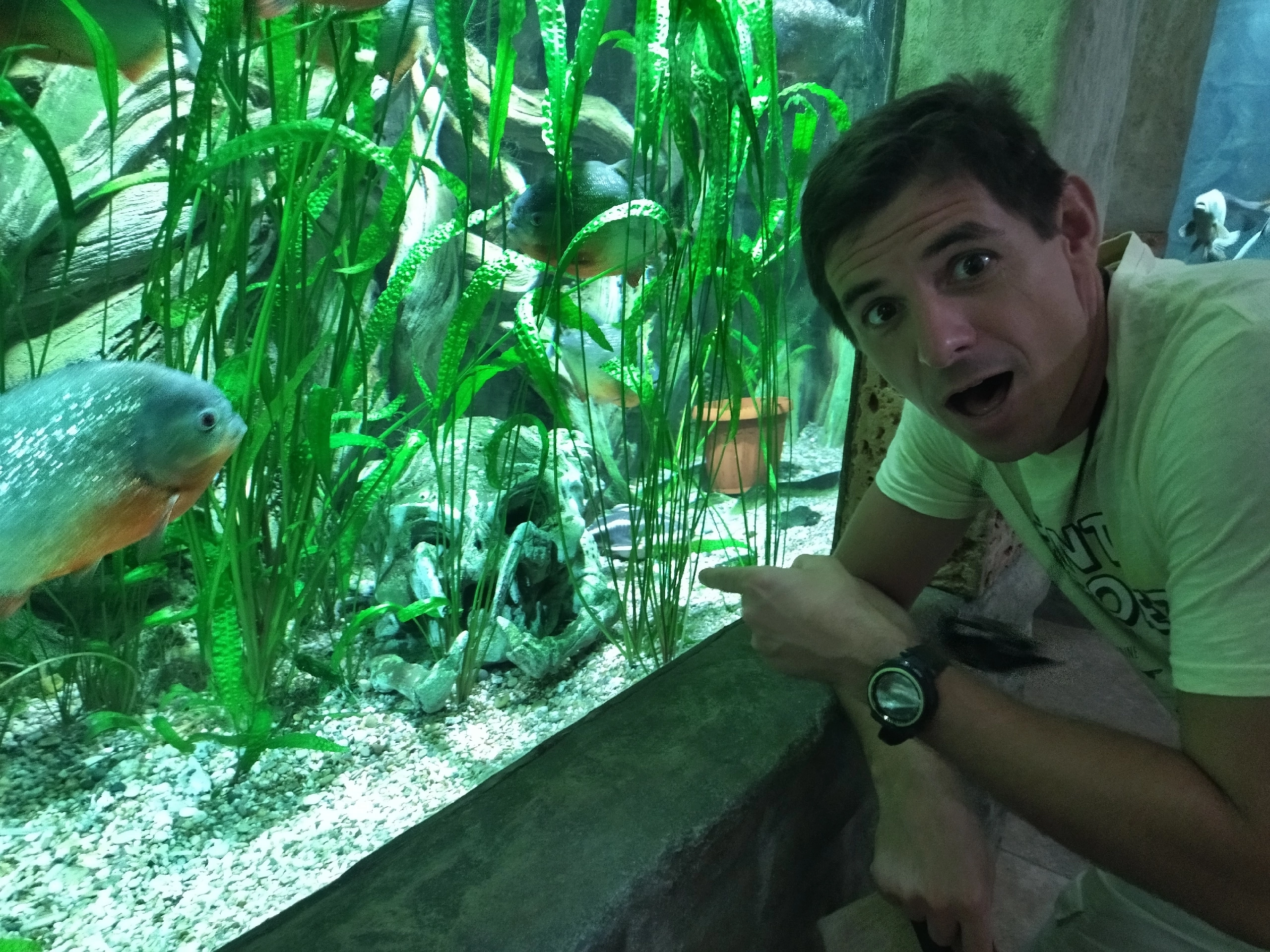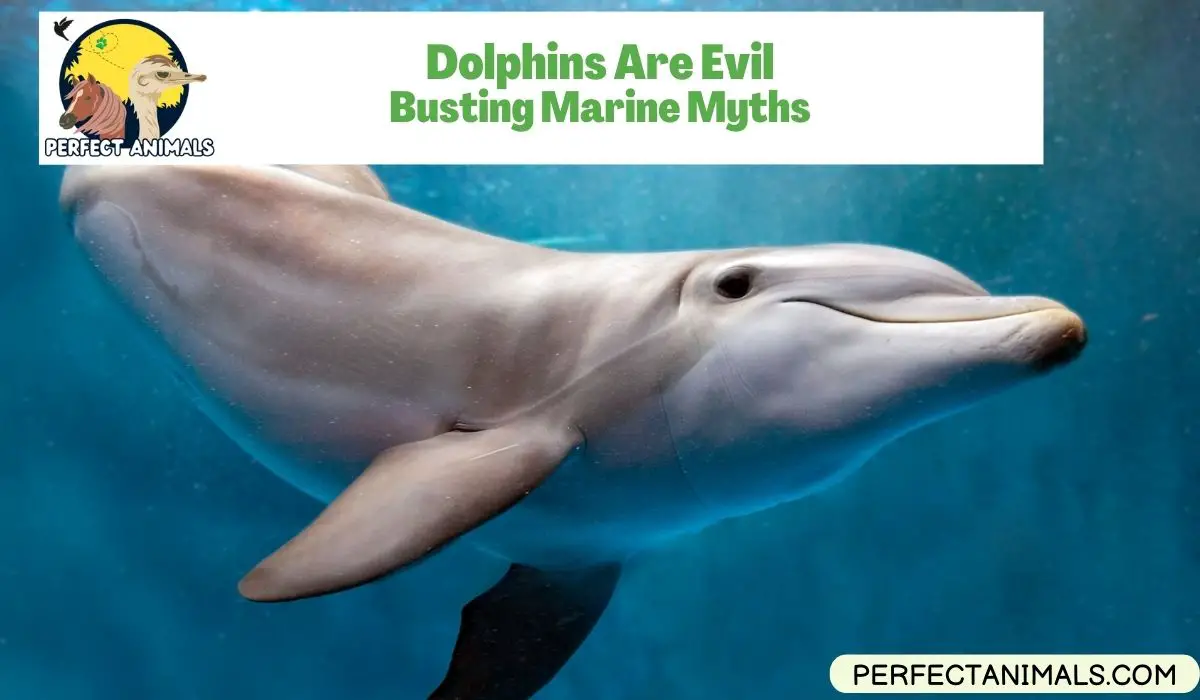Dolphins have long enjoyed a reputation as cute, playful friends of humans.
Their perpetually smiling faces decorate children’s toys and clothing, while TV shows and movies depict them as helpful animal sidekicks eager to give drowning swimmers a boost to safety.
But what if behind that friendly image, dolphins have a dark side?
Increasing evidence suggests that dolphins indeed have a shadowy alter ego behind their compassionate facade – one that scientific research has only begun uncovering in recent decades.
While many mysteries remain around the dolphin mind and motivation, studies have revealed tendencies toward brutal behaviors that seem evil from a human perspective.
Why Dolphins Are Evil?
Dolphins will toy with their prey, much like cats do before a lethal pounce. They seem to enjoy terrorizing and even bullying other creatures in the ocean for fun.
Food is plentiful, so unlike sharks motivated by hunger, dolphin hunting takes on a more sinister aspect – maliciousness purely for entertainment’s sake.
Researchers observed a bottlenose dolphin in Australia that repeatedly killed stingrays by dragging them to the surface, tossing them into the air, letting them plunge, and then batting them up again.
This went on for over an hour until the exhausted stingray succumbed. The dolphin had no intention of eating its mangled victim; the act served no purpose but inflicting torture and death.
In additional cruelty toward fellow ocean dwellers, dolphins will band together to isolate single individuals from a pod of whales as targets for aggression.
They nip and bash the whales for prolonged periods while systematically separating mothers from calves as if training calves like prey for future hunts.
The assaults last far longer than necessary if dolphins merely sought to establish oceanic dominance or defend territory from intruders.
Within their own pods, male dolphins in particular exhibit violence toward females and even their own offspring.
They have been observed using their beaks to slam mother dolphins in the abdomen with sufficient force to cause internal bleeding and even death.
Dolphin embryos and calves also fall victim to battering and trauma.
Such actions seem senseless since the offspring perish and the pod’s future dies with them, which would seemingly go against the males’ evolutionary interests.
You May Also Like – Can Sharks See in the Dark?
Are Dolphins More Evil Than Sharks?
When sharks attack humans, they are likely confusing us with their normal prey – seals, sea lions, etc. Their motivation stems from instinct and hunger rather than malicious intent.
Dolphins, on the other hand, possess intelligence on par with great apes and humans. Their advanced self-awareness suggests they understand the suffering they inflict when brutalizing other creatures.
Sharks spend most time in solitary hunts, coming together only briefly for feeding frenzies or mating.
Dolphins live in highly coordinated social groups, giving them opportunities to cooperate in acts of cruelty and teach such behaviors to calves.
While shark attacks on humans generally consist of a single devastating bite, dolphins have been known to prolong the torment of their victims.
The dolphin’s ability to alternate between nurturing their young and violently assaulting their pod-mates points to a moral complexity beyond shark capabilities.
The dolphin’s capacity for altruistic behaviors like protecting swimmers from sharks further suggests advanced emotional intelligence compared to predominantly instinct-driven sharks.
This may make the dolphin’s decision to harm fellow ocean dwellers an arguably more “evil” choice than the shark’s agenda of eat-or-be-eaten sea survival.
You May Also Like – Are Blue Whales Friendly?
Why Are Sharks Afraid of Dolphins?
Dolphins possess speed and agility in the water that sharks simply can’t match. Clocking speeds up to 18 mph, dolphins can outswim sharks with ease.
This allows dolphin pods to coordinate offense and surround isolated individual sharks.
Additionally, dolphins have acute sonar capabilities. They can detect sharks from a distance and prepare attacks that sharks won’t see coming until it’s too late.
Dolphins have been observed using their muscular snouts and tails to batter sharks forcefully. When solo sharks face an entire angry dolphin pod, the sharks become the hunted.
There are multiple accounts of dolphins killing small sharks by ramming them at high speeds, jumping on them, or pinning them down until the sharks suffocate.
While such murderous aggression seems unnecessary as sharks pose little threat to most adult dolphins, the dolphins savage their victims beyond simply asserting dominance.
Researchers believe the systematic slaughter of sharks by dolphins in Australia and Brazil serves to teach calves shark-hunting skills, further solidifying sharks’ status as dolphin prey.
Essentially, sharks’ disadvantage in speed, sonar detection capabilities, and coordinated pack hunting makes them vulnerable to dolphin attacks.
This is why even formidable bull sharks and great whites flee an area when they sense a dolphin pod nearby – the tables have turned and sharks become targets of dolphin bloodlust.
It’s survival instinct for sharks to view dolphins not as playful ocean companions, but as lethal enemies.
You May Also Like – Are Sea Otters Friendly?
Are Dolphins Friendly or Evil To Humans?
The evidence of dolphins’ relations with humans is mixed. There are certainly plenty of reports of dolphins rescuing distressed swimmers from sharks by circling them protectively or nudging them toward shore.
However, not all human-dolphin interactions are benign.
Dolphins have demonstrated aggressive sexual behavior toward both male and female human swimmers on occasion.
Male dolphins in captivity have also forced themselves onto human trainers. While these incidents arise from the unnatural confinement and human proximity in parks like SeaWorld, they belie the frisky nature of male dolphins even with incompatible species.
However, most free-swimming dolphin pods limit physical interactions with humans. They may ride waves jointly with surfers, leaping in parallel formations.
But authentic attacks are rare, with curiosities or accidents more likely explanations when incidents occur.
The reality is that the dolphin mind remains mysterious to human science. Their intelligence suggests complex emotional and psychological depths we have only begun understanding.
They exhibit human-like behaviors from tool use to self-recognition yet remain wild animals in an aquatic world foreign to us. To ascribe human morals like “good” or “evil” may be an oversimplification.
In the end, dolphins seem aware enough of human vulnerability that they choose restraint with swimmers most of the time.
Whether that stems from benevolence or just caution around unfamiliar bubble-blowing creatures is anyone’s guess.
But for now, humans can cautiously continue viewing dolphins as playful companions whenever our paths cross out in deep waters.
You May Also Like – How Many Eyes Does An Octopus Have?
Final Thoughts
Despite the evidence of dolphins exhibiting disturbing behaviors like wanton cruelty and violence, their inherent friendliness toward humans likely means they are not “evil” creatures at the core.
We are biased by our human morals and cannot fully measure wild animal psychology and motivations by our standards.
That being said, dolphins do shock researchers with displays of apparent maliciousness completely disproportionate to any threat or need.
The reasons behind why an intelligent, self-aware species like dolphins chooses violence over gentler options sometimes remain a mystery.
Do they possess a darker, more primal side beneath their smiling facades that science simply fails to comprehend? Are there complex psychological drivers tied to dominance, territoriality, or social structures that spur seemingly sadistic dolphin actions? I
t’s hard to know for certain what distinctions, if any, separate dolphins’ mental processing from our human version of ethical vs evil behavior.
Clearly, more research into the enigmatic dolphin mind can help explain the contradictions between kindness and cruelty.
But for now, dolphins occupy an intriguing moral grey area among Earth’s creatures – neither saint nor sinner perhaps, but something in between that we have yet to fully illuminate.
Resources – (for further reading)
Seaworld.org – All About Bottlenose Dolphins – Behavior
Dolphins World – Dolphin Behavior
MarineBio Conservation Society – Dolphins (toothed Whales) – Behavior

Jamie has a rich understanding of marine life, garnered through extensive study and hands-on experience with various marine organisms. He has actively participated in marine education programs, broadening public understanding of the ocean’s intricate ecosystems.

